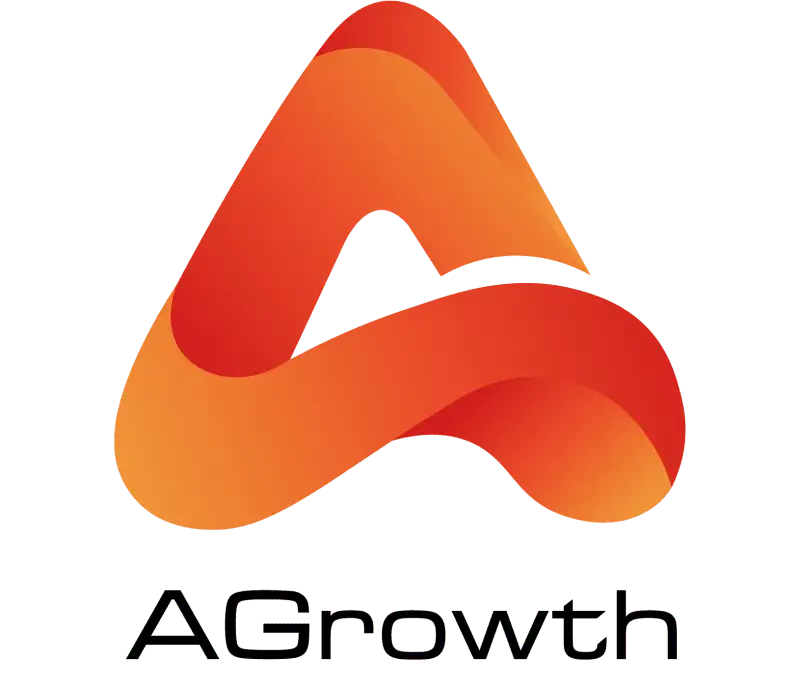
Table of Contents
How to Scale Facebook Ads in 2025: Proven Strategies for Marketers
Scaling Facebook ads isn’t just about raising your budget — it’s about maintaining performance while increasing your reach and profitability. In 2025, with rising CPMs, privacy updates, and AI-driven ad delivery, scaling campaigns efficiently has become both an art and a science.
This guide walks through the most reliable scaling frameworks, key performance signals, and advanced tactics that professional advertisers in the US and UK can use to grow ad performance without hurting ROAS.
When Should You Start Scaling Your Facebook Ad?
Before scaling, you need to confirm your campaign’s stability. Scaling too early often leads to wasted spend and algorithm resets.
Signs Your Campaign Is Ready
Your campaign should show steady results for at least 5–7 days with minimal volatility in CPA. A strong foundation includes:
-
Consistent ROAS above your break-even point
-
Winning creatives with proven engagement (CTR > 1%)
-
A frequency rate under 3
-
Reliable conversion data (50+ weekly conversions per ad set)
Metrics to Validate Before Scaling
Before expanding, analyze your key data points:
-
CPA or CAC stability
-
Conversion rate (CVR) from landing pages
-
Frequency and engagement drop-offs
A campaign is ready when these metrics indicate stability and consistent delivery.
Scaling vs Optimizing — What’s the Difference
Optimization is about refining performance — improving CTRs, tweaking targeting, and testing creatives. Scaling, on the other hand, means increasing your ad spend or reach while maintaining profitable metrics. The goal is not just to spend more, but to expand winning strategies without losing efficiency.
Facebook Ads Scaling Frameworks
Scaling effectively requires structured frameworks that align with Meta’s learning system. There are three primary ways to scale: vertical, horizontal, and hybrid.
Vertical Scaling
Vertical scaling focuses on increasing the budget within the same campaign or ad set.
Best practices:
-
Raise your budget by no more than 20–30% every 3–5 days.
-
Maintain the same audience, creative, and objective to avoid restarting the learning phase.
-
Use Advantage Campaign Budget (CBO) if your ad sets share similar performance.
This gradual method allows the algorithm to adjust smoothly, maintaining stable delivery while increasing volume.
Horizontal Scaling
Horizontal scaling means expanding outward instead of upward. Instead of putting more money into the same ad set, you duplicate your winning ad set and change one key variable to find new, untapped pockets of customers.
This is how you find new "lakes" to fish in once your current one starts to get crowded.
-
Lookalike Expansion: This is a classic horizontal tactic. If your 1% Purchase Lookalike audience is a winner, duplicate the ad set and test a 1%-3% LAL, a 3%-5% LAL, or even a 5%-10% LAL. You can also test LALs from different source events (e.g., Add to Cart, Initiate Checkout).
-
Broad Targeting: A major 2025 strategy. Trust Meta's AI. Duplicate your ad set, remove all detailed and lookalike targeting, and go broad (e.g., USA, 25-55, Female). With strong creative and solid pixel/CAPI data, the algorithm is often smarter than your manual targeting.
-
New Creative Angles: Duplicate your ad set and test a completely new creative concept. If your winner was a testimonial video, try a problem-focused UGC ad or a benefit-led carousel. This targets the same audience but with a fresh message, fighting ad fatigue before it starts.
-
New Geos/Placements: Expand to new countries (international scaling) or test different placements (e.g. Automatic Placements vs. Manual Reels/Stories only).
Hybrid Scaling
In reality, no one scales using only one method. Sustainable growth comes from a hybrid approach.
You start by scaling vertically on your winning ad set until you see performance begin to dip (rising CPA, high frequency). This is your signal of audience saturation. At that point, you shift to horizontal scaling to find new, stable audiences. Once you validate a new horizontal ad set (e.g., a 3-5% LAL proves profitable for 5-7 days), you can then begin to scale that new ad set vertically.

Common Mistakes When Scaling Facebook Ads
There are more ways to fail at scaling than to succeed. Here are the most common traps that even experienced advertisers fall into.
Increasing Budget Too Quickly
This is the number one sin. You see a 5.0 ROAS, get excited, and 5x the budget overnight. The result? The algorithm is shocked, the learning phase is reset, and your CPA explodes. The algorithm needs time to learn and spend a new budget level efficiently. Respect the 20-3im% rule.
Ignoring Audience Overlap
This happens during aggressive horizontal scaling. You have five different ad sets all running:
-
1% Purchase LAL
-
1% Add-to-Cart LAL
-
Interest: "Competitor A"
-
Interest: "Competitor B"
If these audiences are too similar, they have a high overlap. This means your own ad sets are bidding against each other in the auction, driving up your CPM (Cost Per Mille) and hurting performance for everyone. Use Meta's "Audience Overlap" tool to check this. If overlap is >20-30%, consider consolidating those ad sets.
Reusing Creatives Too Long
This is the "ad fatigue" mistake we covered earlier. The symptoms are clear: declining CTR, rising frequency, and a dying ROAS. You must have a pipeline of fresh, tested creative assets ready to deploy.
Scaling Weak Offers
This is a fundamental business-level error. "You cannot scale a broken offer," as the marketing proverb goes. If your landing page conversion rate is 0.5%, no amount of ad budget will fix it. Facebook's job is to send traffic; your job is to convert that traffic. A $10,000/day ad spend will only expose your weak offer to more people, faster. Fix the offer, the price, or the landing page before you scale.
Privacy & Tracking Issues
Scaling in 2025 with a broken or incomplete data setup is like flying a plane with no instruments. Post-iOS 14 limitations are real. If you are not using the Conversions API (CAPI) to send stable, server-side data back to Meta, your reporting is wrong. Your audiences are incomplete, your optimization is blind, and your scaling decisions will be based on guesswork. CAPI is a non-negotiable requirement for scaling.
AGROWTH - GOOGLE AGENCY ACCOUNT
⭐ Managed campaigns with expert guidance
⭐ Flexible invoice-based billings, custom top-ups
⭐ High resistance to suspension via agency tier
⭐ Quick fund transfer to new account if needed
⭐ Priority support via Google Partner channel
⭐ Lower fees from 3-5%
⭐ Eligible for bonus credit up to $384
Facebook Ads Scaling Tactics That Actually Work
Scaling in 2025 requires both strategic data interpretation and creative agility. The tactics below focus on maintaining ROAS while increasing reach.
Expand and Diversify Audiences
Move beyond narrow targeting. Broader and data-driven audiences perform better with Meta’s AI-driven optimization.
Use information from your pixel and Conversions API (CAPI) to create value-based lookalikes and high-intent retargeting audiences.
Refresh Creatives to Avoid Fatigue
Ad fatigue is one of the most common scaling barriers. Watch for drops in CTR and engagement — they’re early signs of creative exhaustion.
To prevent this:
-
Introduce new variations of your top-performing ads
-
Test UGC (user-generated content), product demos, or short-form videos
-
Refresh thumbnails, CTAs, and headlines regularly
As you test new creative formats like UGC and short-form videos, ensuring your assets are perfectly formatted is crucial. Check the complete guide on all Facebook ad sizes and specs to ensure flawless delivery across placements.
Optimize Bidding and Budgeting
Strategically manage your campaign budgets to ensure efficient scaling:
-
Use Advantage Campaign Budget (CBO) for performance consistency across ad sets
-
Keep ABO campaigns when you need tighter control over audience testing
-
Adjust bids based on performance signals instead of daily fluctuations
The key is to increase spend without resetting the algorithm or overpaying for impressions.
Leverage Automation and AI Tools
Meta’s automated rules and AI systems are designed to simplify scaling.
You can:
-
Set rules to increase budget automatically when ROAS exceeds your target
-
Use dynamic creative optimization (DCO) for real-time ad variations
-
Apply predictive bidding strategies based on conversion likelihood
Advanced Scaling Strategies For Marketers
For professional advertisers, scaling goes beyond Meta’s ecosystem. Integrating advanced strategies ensures sustained growth.
Integrate AI and Automation
Dynamic creative optimization and predictive targeting are now essential for scaling large campaigns. Automation helps deliver the right message to the right audience at the right time without manual intervention.
Cross-Channel Scaling
Once you’ve maximized your Facebook reach, consider expanding to complementary channels like TikTok, Google, or YouTube. This approach diversifies risk and reinforces your messaging across platforms.
International Scaling
To scale internationally, localize creatives for new markets. Adapt currencies, languages, and cultural nuances. Even subtle differences in tone or imagery can significantly affect performance.
Continuous Testing and Optimization
Scaling isn’t a one-time action — it’s a cycle. Keep testing audiences, creatives, and placements while maintaining consistent budget growth. Small, data-driven iterations lead to sustainable long-term success.
FAQs
Let's answer the most common, specific questions advertisers have when they're ready to scale.
When is the best time to scale Facebook ads?
The best time is after you have 5-7 consecutive days of stable, profitable performance (e.g., target CPA/ROAS is met) and your ad set has generated at least 50 conversions in that period. Do not scale on a single good day.
How much should I increase my budget when scaling?
Stick to a 20-30% increase at a time. Wait 3-5 days for performance to stabilize before increasing it again. This "slow and steady" approach avoids resetting the learning phase.
Should I duplicate ad sets or increase the budget?
Use both (Hybrid Scaling). Start by increasing the budget (vertical scaling) on your winning ad set. When you see performance start to decline (rising CPA/frequency), duplicate the ad set (horizontal scaling) to test new audiences (e.g., broader LALs, new interests) or new creatives.
How do I avoid creative fatigue during scaling?
By having a "creative pipeline." You should always be testing new creative concepts in a separate testing campaign. As soon as you see your main "control" creative start to fatigue (falling CTR, rising CPA), you swap in your new, proven winner.
Can I scale my Facebook ads internationally?
Yes, this is one of the most effective horizontal scaling methods. Start with countries that have similar markets (e.g., if you're in the US, try Canada, UK, Australia). Ensure you localize your ads, landing page, currency, and payment options.
My CPA increases when I scale. Is this normal?
Yes, a slight increase in CPA is normal and expected. You are forcing the algorithm to find new people who are likely "colder" and more expensive to convert. The goal is not to maintain your exact CPA, but to keep your blended CPA/ROAS within your profitable target range as you increase spend.
How long should I wait before scaling a new ad set?
You must wait until it has exited the learning phase and proven itself. This typically requires at least 50 conversions and 5-7 days of stable, profitable performance. Scaling an unproven ad set is just gambling.
What role does Advantage+ Shopping (ASC) play in scaling?
ASC is one of Meta's primary scaling tools for 2025, especially for e-commerce. It uses Meta's most advanced AI to manage prospecting and retargeting in one campaign, finding new customers at scale. Many advertisers find ASC campaigns can handle significantly larger budgets with more stability than their manual CBO/ABO setups.
Related posts:










Your comment